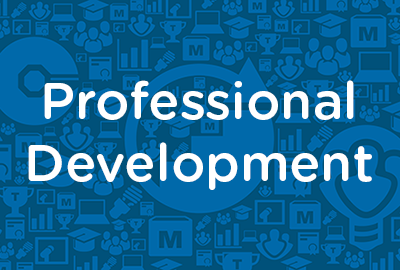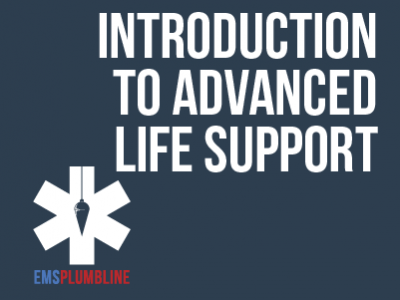 |
Grammar Skills: Word Choice |
1.00 |
This course covers how to choose the appropriate words for clear communication and how to recognize and use frequently misused words correctly. You will also learn how to avoid common spelling errors and correctly attach prefixes and suffixes to words. |
 |
Coaching: Interpersonal Meetings (Instructor Guide) |
0.75 |
As a coach, your communication skills are critical to your success and the employees you are coaching. In many office environments, it can be tempting to get through the day without much personal contact by relying on technology. However, nothing can replace the benefits of personal interaction, or face-to-face communication.
This Instructor's Edition of this course includes notes and suggestions to assist you in presenting the material, whether in an in-person classroom setting or as an instructor-led online or distance-learning course. It also provides you with the answers to questions found in mid-lesson activities, as well as in the quiz that concludes the course. |
 |
Employee Performance: Conflicts |
0.67 |
In any organization, there are individuals with unique personalities and responsibilities. Conflicts are an inevitable part of employee interaction. Knowing how to resolve conflicts when they arise is vital to the well-being of any company.
In this course you will learn to: identify common myths associated with workplace conflicts, common reasons that conflicts arise, and types of workplace conflict, and distinguish between conflict management and conflict resolution. |
 |
Creativity and Innovation: Personal Creativity |
1.34 |
Creativity is often considered a talent that some people have. Actually, creativity's a skill that everyone can nurture through exercise and practice. You can prepare yourself both mentally and physically to be creative.
In this course you will learn to: prepare yourself mentally and physically to be creative, and use your experiences, innocence, intuition, and sense of adventure to increase your creativity. |
 |
Creativity and Innovation: Creativity In Organizations |
1.34 |
Creativity in an organization depends on various factors, such as the distribution of authority, the flow of information, and the culture. Some organizations encourage creative thinking to a large extent, and others discourage it. You can recognize a creative organization from its leaders. A leader who can influence a team and inspire them to work creatively builds a creative workforce. Such teams look at problem solving as a means to develop creativity. Although there are certain organizational situations that can enhance creativity, you should also be aware of the organizational factors and job conditions that can inhibit your creativity.
In this course you will learn to: develop creativity in an organization, and use creativity to generate ideas and solve problems. |
 |
Effective Presentations: Building Presentations (Instructor Guide) |
1.17 |
Organization is extremely important in a presentation because the audience cannot follow your work if they become confused. Therefore, it is the responsibility of the presenter to help the audience understand the presentation from beginning to end.
This Instructor's Edition of this course includes notes and suggestions to assist you in presenting the material, whether in an in-person classroom setting, or as an instructor-led online or distance-learning course. It also provides you with the answers to questions found in mid-lesson activities, as well as in the quiz that concludes the course. |
 |
Freelance Work |
0.50 |
This course will teach you what freelance work is and why it's becoming a common career path for many professionals. Freelance work is completed by people known as freelancers, who are self-employed rather than having a permanent employment to a singular company. This type of work involves short-term jobs, such as gigs or temp jobs. |
 |
Conflict and Communication: Why Can't We Be Friends? |
1.00 |
Conflict occurs when we are in relationship with others. In fact, the hallmark of a healthy relationship is not the absence of conflict, but the ability to successfully resolve it. Unfortunately, resolving conflict is not a skill many of us were taught. We'll explore the fundamental causes of conflict and the dynamics that can escalate conflict. Finally, we’ll cover the tools necessary to navigate conflict successfully, including effective communication strategies. |
 |
Construction Safety & Prevention Program: OSHA Inspections |
0.50 |
This course covers the process of OSHA inspections, the penalties incurred when a workplace does not satisfy OSHA standards, and how to properly respond to an OSHA inspection. |
 |
Time Management: Information Overload |
1.00 |
This course will focus on how to identify the causes of information overload and overcome it by screening information, control paperwork by organizing your office and filing system, and communicate effectively to increase productivity. |
 |
Employee Performance: Communication |
1.00 |
Communication is effective when a listener clearly understands a speaker’s message. Good communication fosters a productive exchange of ideas while minimizing the possibility of confusion or misunderstanding.
When trying to communicate with a difficult employee, you must be willing to work with that person to correct the problematic behavior. Openly discussing the behavior can help you find a mutually acceptable solution.
In this course you will learn to: communicate clearly and effectively by using verbal and nonverbal communication, and improve your listening skills, and communicate with difficult supervisors and coworkers, take a proactive approach when dealing with difficult employees, and identify types of employee dismissals. |
 |
Motivation: Identifying, Planning, and Implementing: Using What You've Learned |
0.50 |
In life, to be a successful, you must have a plan. Napoleon Hill, author of Think and Grow Rich, said, “Create a definite plan for carrying out your desire and begin at once, whether you ready or not, to put this plan into action.” This course has provided you with the information and—we hope—the inspiration to improve your motivational skills and work toward personal success. The final two steps are up to you: You must implement what you have learned and continue to work on improving your skills.
In this course you will learn to: work toward improving your motivational skills by using the 21-day habit and satori, and use resources, including websites and books, to continue working on your motivational skills. |
 |
Cross-Cultural Business Communication: Workplace Culture |
1.00 |
Culture is a way of life established by a group of people and passed on to succeeding generations. People within a culture usually share common values, beliefs, and perspectives and have the same language and communication style. Although people within a culture must live in close proximity while the culture is being established, future generations frequently relocate to other countries or regions. This creates situations of cross-cultural exchanges.
As we become increasingly diverse, there is a growing demand for cross‑cultural communication in the workplace. Technology allows us to communicate with peers across the globe, as though they were sitting in our offices. Efficient and cost-effective travel makes it possible to communicate face-to-face with clients in other countries. In addition, companies seeking diverse and highly skilled employees find a conglomeration of cultures among them. As a result, employers are emphasizing cross-cultural communication in their own organizations to prepare employees to work with diverse co-workers and clients.
In this course you will learn to: discuss the value of culture and the significance of cross-cultural communication in the workplace, and describe the impact of cultural differences on communication, and avoid miscommunication and conflicts that arise due to these difference. |
 |
Project Teams: Decision-Making in a Project Team (Instructor Guide) |
1.00 |
Once a project team comes up with options for implementing a project, they must decide which option to use. There are various methods the team can use to make a decision, ranging from authority decision-making to consensus.
In this course you will learn to: use the various methods of decision-making available to project teams, and resolve conflicts and achieve consensus in a project team.
This Instructor's Edition of this course includes notes and suggestions to assist you in presenting the material, whether in an in-person classroom setting, or as an instructor-led online or distance-learning course. It also provides you with the answers to questions found in mid-lesson activities, as well as in the quiz that concludes the course. |
 |
Grammar |
1.50 |
Grammar is an essential part of any work environment. However, it can come with many different eccentricities. In this course, you will learn how to avoid common grammar mistakes in both your personal and professional writing. |
 |
Adult and Child CPR (Corrections) |
2.00 |
In this course, you will learn how to properly perform Adult and Child CPR that may someday enable you to save someone's life. |
 |
Constructing: Sepsis for Paramedics, Part 2—Fluid Resuscitation |
1.00 |
If you think caring for sepsis patients is not an interesting topic, you might want to think again. Medical Directors Jeremy Cushman and Christopher Galton, give Paramedic Hoskins a passionate description of proper patient care. Fluids are important and this is why. Final Exam: This multiple choice exam is designed to test your knowledge of the material you just reviewed. You have two attempts to gain an 80% or higher on this exam. Please take your time and answer each question carefully. |
 |
Time Management: Productivity |
0.75 |
This course will focus on how to increase productivity by controlling interruptions and meetings and recognize and overcome factors that adversely affect productivity. |
 |
Implicit Bias (Corrections) |
1.00 |
In this course, you’ll learn about implicit biases that happen despite our best intentions. After completing this course, you will be able to:
Define implicit bias.
Describe how implicit bias can impact the workplace or an organization.
Identify the steps you can take to further educate yourself about this topic. |
 |
Correcting Performance Problems: Investigating Performance Problems |
1.00 |
Before addressing a performance problem, you should confirm the existence of the problem itself. An interview is a useful method for doing this. During the interview, you might encounter facts that you were previously unaware of and excuses that you didn’t expect. It's important to follow a definite process, and expect the unexpected during the interview.
In this course you will learn to: identify the causes for an employee’s performance problem by interviewing, and question an employee regarding attendance issues, describe the factors affecting achievement, and apply conduct investigation techniques. |
 |
Correcting Performance Problems: Addressing Behavioral Problems |
0.84 |
In this course you will learn to: communicate and prevent the discrepancy between an employee’s behavior and performance standards, and identify the type of employee reaction and tackle it effectively.
For a feedback session to be effective, you need to emphasize the impact of the problem behavior to the employee. Their behavior mainly impacts three entities: the organization, co-workers, and the employee. When explaining these factors, you should maintain a proper perspective based on some set guidelines throughout the feedback. |
 |
Project Teams: Projects and Project Teams (Instructor Guide) |
1.00 |
A project is a task or a group of tasks with a distinct beginning and end that is undertaken to create a unique product or service. A project must have defined objectives to clearly indicate when the project is complete. In addition, a project must have a clear end user who will use or benefit from the product or service produced by the project team.
When an organization develops temporary needs that are outside the scope of individual employees’ responsibilities, it often forms project teams to address these issues. As a manager, it is your responsibility to recognize the need for a project team, determine the type of team required for the project, and assign employees to the team.
In this course you will learn to: identify the phases and requirements of a successful project, and build and organize a project team and avoid pitfalls in project teams.
This Instructor's Edition of this course includes notes and suggestions to assist you in presenting the material, whether in an in-person classroom setting, or as an instructor-led online or distance-learning course. It also provides you with the answers to questions found in mid-lesson activities, as well as in the quiz that concludes the course. |
 |
Remote Learning in a Tiered Behavior Framework |
1.00 |
This course covers implementing strategies for remote learning in a tiered behavior framework. A different setting for learning requires adaptations to instruction, engagement, and response to students. School and family partnerships lay the foundation for supporting students in a Multi-Tiered System of Support (MTSS). |
 |
Child Abuse Prevention and Awareness for K-12 |
1.50 |
This course covers child abuse and prevention awareness. This course will help you develop new knowledge about students and will help you understand how children who may be abused can be helped within schools. |
 |
Motivation: Identifying, Planning, and Implementing: Basics Of Motivation (Instructor Guide) |
1.00 |
If you’re going to take a trip by driving from New York to Los Angeles, you’ll need several tanks of gas. Similarly, if you plan to take a trip that will move you closer to a personal or professional goal, you can expect that you will need several refills of your motivation tank to give you the energy to get there. People say that a journey of a thousand miles begins with a single step, but it’s extremely difficult to continue taking steps when your personal-motivation fuel tank is empty.
In this course you will learn to: describe the basics of motivation, define motivation as a process, and describe some theories about how motivation can affect your productivity.
This Instructor's Edition of this course includes notes and suggestions to assist you in presenting the material, whether in an in-person classroom setting, or as an instructor-led online or distance-learning course. It also provides you with the answers to questions found in mid-lesson activities, as well as in the quiz that concludes the course. |


























